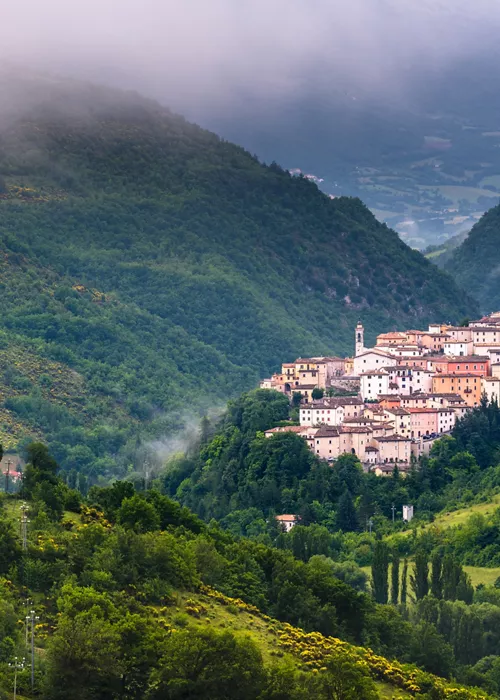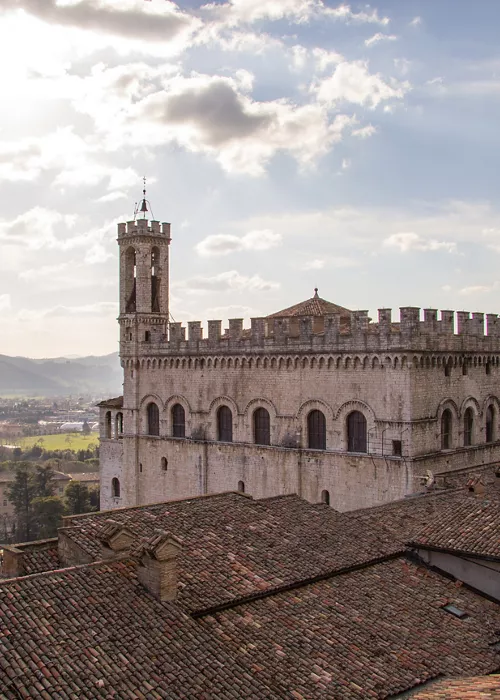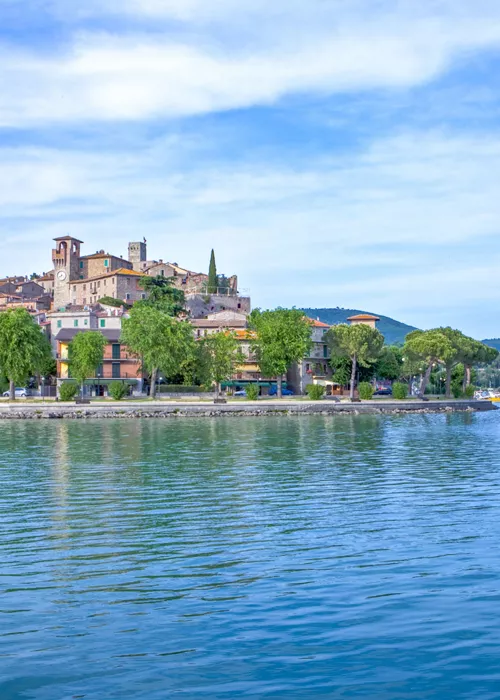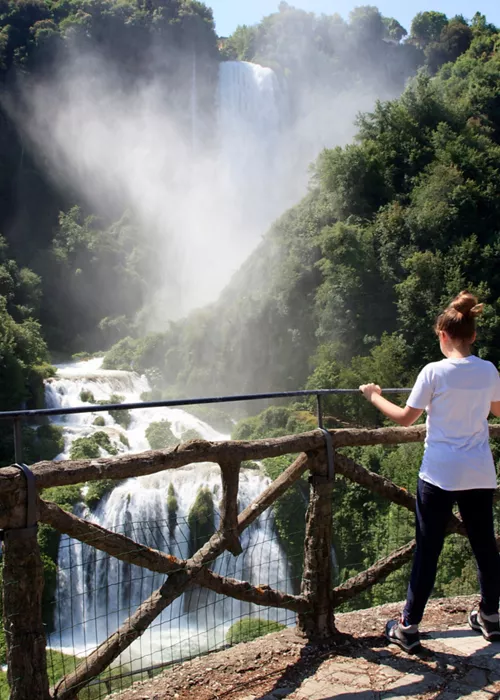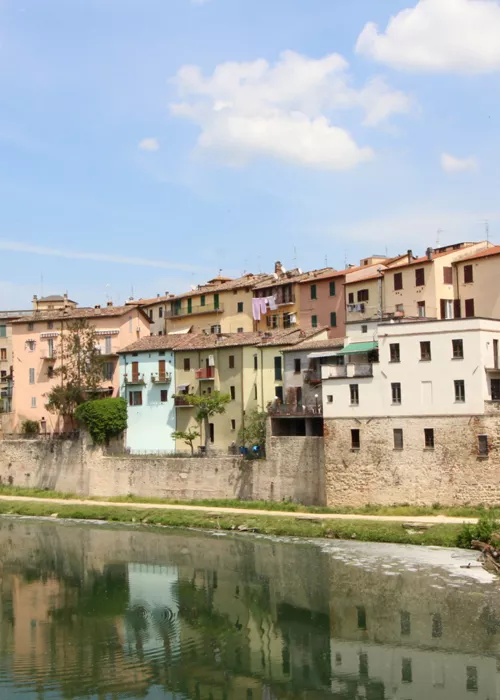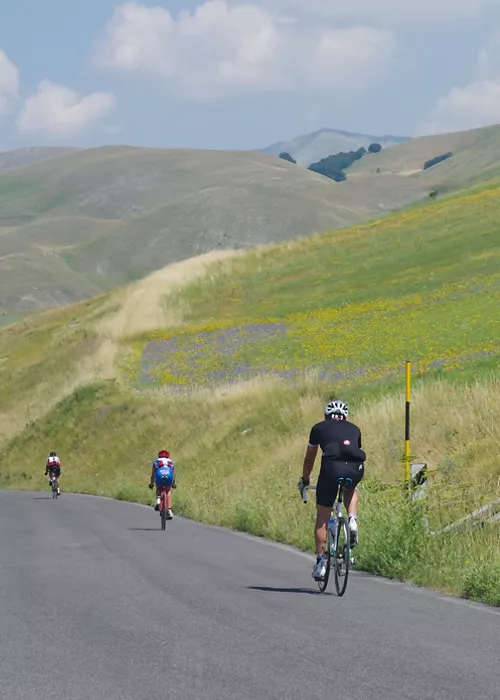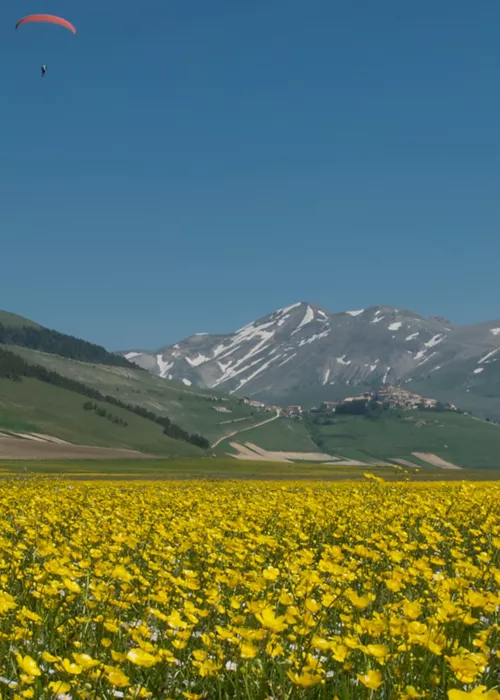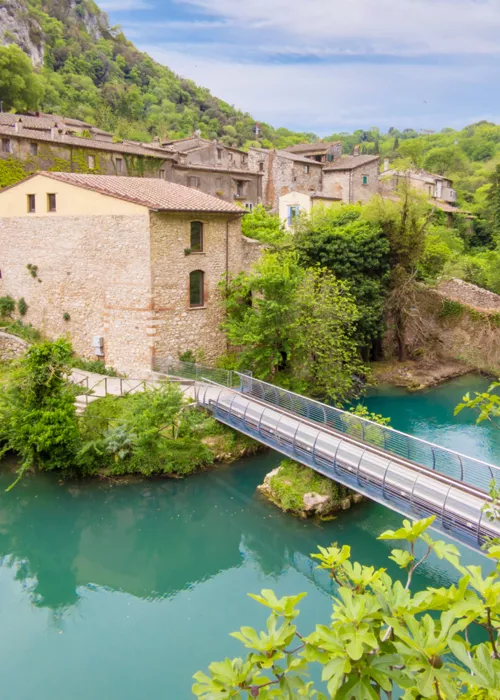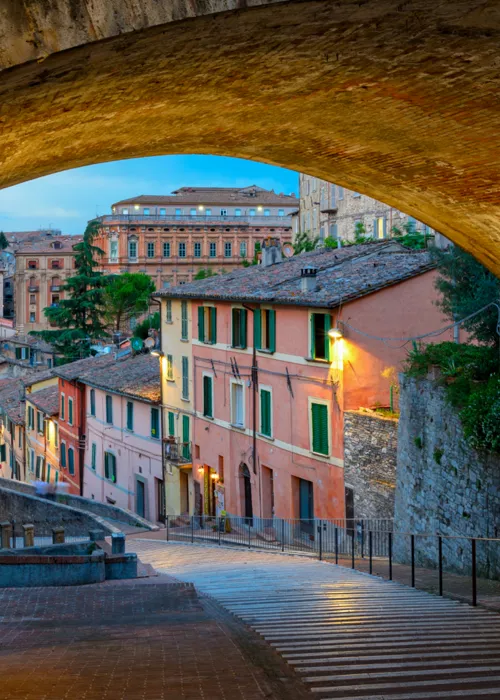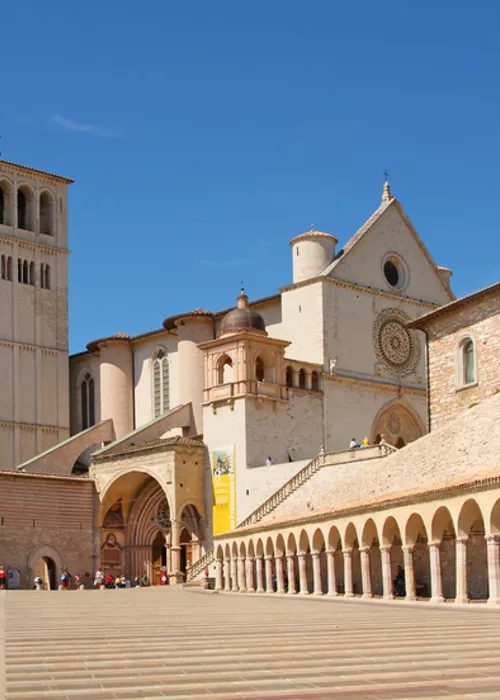3 Amazing Villages around Lago Trasimeno in Umbria
11 minutes

Located in the heart of Italy, Umbria is the only region in the country that doesn’t have a coastline or a border with another country. Surrounded by mountains, hills, valleys and plains, Umbria has managed to preserve its ancient traditions, which are some of the oldest in Italy.
This scenic agricultural region is known as the Green Heart of Italy, and even though it has no access to a coastline, it has Lake Trasimeno to make up for it.
Lake Trasimeno is the largest lake in central Italy and the fourth largest lake in the country, only slightly smaller than Lake Como but a lot less known. It’s a true natural paradise and a haven for a great variety of birds and other wildlife.
The lake is surrounded by a backdrop of rolling hills, sunflower fields, vineyards and olive groves. This idyllic landscape was once inhabited by the Etruscans, and today it’s surrounded by lakeside and hilltop medieval towns with a lot of history to discover.

One of my favourite things to do around Città della Pieve was to just wander around its narrow streets and alleys, and discover the many viewpoints over the countryside of Umbria, Lazio and Tuscany.
There are two routes that you can follow that will cover the most interesting points. One of these routes is the Alleys Walk (Percorso dei Vicoli), which will take you through the most quaint and interesting alleyways, including the famous Vicolo Baciadonne, one of the narrowest streets in Italy.
The second route is the Landscape Walk (Percorso del Paesaggio), which will take you around the village following the ancient walls.

Sunsets in Città della Pieve are spectacular, so my suggestion would be to follow this route as the sun goes down when you can see the countryside change colour, and the village warm tones turn fiery. My favourite viewpoint was the panoramic balcony that hugs the outside of the Church of San Pietro.
As I wandered the streets of Città della Pieve following these routes, I stopped at La Rocca Perugina, an imposing fortress built in the 14th century that now houses the tourist information office.
Another point of interest that I really enjoyed was the Palazzo della Corgna, a 16th century palace with grotesque decorations, works by Il Pomarancio, and a painted ceiling by Salvio Savini. Here you will also find an Etruscan obelisk from the 5th century that was found nearby.
One of the things that I found most intriguing about Città della Pieve was that there is a network of secret ancient underground tunnels that expands most of the village. These tunnels date to the middle ages, but the vast majority have been closed off and are now part of individual buildings and used as private cellars.
Città della Pieve is also a great destination for foodies. It is famous for the cultivation of saffron, which has been harvested by hand from crocus flowers since the Middle Ages. Don’t miss trying the local saffron risotto.
And being so close to the Tuscan border, also means that its cuisine has both Tuscan and Umbrian elements such as truffles, porcini mushrooms, handmade pastas, and delicious cured meats.
Top 5 things not to miss
- The Landscape and Alleys Walks including Vicolo Baciadonne.
- The Works of Perugino in the Cathedral and Oratory and Santa Maria dei Bianchi.
- The Cathedral Crypt.
- Sunset at Passarela Panoramica by Church of San Pietro.
- Try the local saffron risotto.
Panicale, an enchanting medieval treasure

Panicale is said to be the most beautiful terrace overlooking Lake Trasimeno. With its original medieval structure intact, this small village is part of The Most Beautiful Villages in Italy (Borghi più Belli d’Italia) and also boasts the Orange Flag of the Italian Touring Club, as recognition of its cultural and landscape legacies.
With less than 150 residents, Panicale may be bijou, but it certainly packs a punch when it comes to history and all the things there are to discover.
At the centre of it all, it’s three squares at three different levels. As I walked into Panicale through Porta Perugina, I walked into the first square. Piazza Umberto I is at the lower level, and it’s where we find the 15th century cistern which was turned into a fountain in the 1900s. This has been the location of the local market for centuries.
The middle level square is where the Collegiate Church of Saint Michael Archangel can be found. This 11th century church is home to the Adoration of the Shepherds, a painting by Renaissance artist G. Battista Caporali, who was a pupil of Perugino.
The highest point of the village is Piazza Masolino, from where there are stunning views of the Umbrian and Tuscan countryside. Here is where you find the 14th century Palazzo del Podestà, which today houses the Historic and Legal Archives.

Leaving the heart of the village through Porta Fiorentina, you can see the only two remaining castle towers, out of the original eight. And just across the road is the deconsecrated Church of Sant'Agostino, home to the Anita Belleschi Grifoni Museum of Embroidery on Tulle or Ars Panicalensis.
This type of embroidery originated with local nuns in the 18th century and is an art unique to Panicale. The museum was named after Anita Belleschi Grifoni, who brought the art to the forefront by setting up an embroidered tulle school at the beginning of the 20th century, after the nuns had left the village.
The museum recounts the history of Ars Pancalensis and the exhibits include artefacts from the school, a very long bridal veil among other items. Panicale tulle is highly priced and it has been worn by many illustrious people, including the Savoy royal family.
Another highlight of Panicale is San Sebastiano Church, located outside the walled village on top of a small hill. The church houses two frescoes, the magnificent The Martyrdom of Saint Sebastian by Perugino, and the Madonna Enthroned Among Musical Angels, which has been attributed to Raphael, his pupil.
Before leaving Panicale, I was able to visit the Cesare Caporali Theatre, one of Italy’s smallest theatres. Built in the 17th century by a group of residents, it was originally made of wood, but it has been renovated since and it now has 140 seats, including 24 boxes.
If you happen to be in Panicale when there is a show, I would highly recommend getting a ticket. There are not many theatres that resemble an opulent opera house in miniature, like the Cesare Caporali Theatre does.
Top 5 things not to miss
- The three squares of Panicale.
- The Works of Perugino and Raphael in San Sebastiano Church.
- Anita Belleschi Grifoni Museum of Embroidery on Tulle in Panicale.
- Collegiate Church of Saint Michael Archangel.
- A show at Cesare Caporali Theatre.
Passignano sul Trasimeno, a serene fishing village with a bloody past

Passignano sul Trasimeno is an ancient fishing village located on the shores of Lake Trasimeno. Surrounded by vines and olive trees, it is part of the network of the most beautiful villages in Italy (I Borghi più Belli d’Italia).
Passignano may feel like a pocket of serenity, but it hasn’t always been like that. It was here that in the year 217 BC the greatest ambush in history took place. Hannibal’s army ambushed the Romans using a technique that hadn’t been seen before, resulting in the loss of 15,000 Romans. It is said that the water in the lake turned red with blood.
With a history that goes back to Etruscan times, Passignano has moved on with the times. Today it is a popular destination for Italians looking to get away from it all.
But there is still a strong sense of history around. The oldest quarter in the village dates back to medieval times. The gates and towers that flanked the original walls have been preserved almost intact, including the rare triangular Torre di Ponente, which still bears the village’s coat of arms.

The highest point in the village is the Rocca, a 5th-6th century fortress that has the most spectacular 360 degree views of Lake Trasimeno, the village, and the countryside around it. Within the Rocca you can also find a small Boat Museum.
Just outside the old village centre, we find the Church of San Cristoforo, dating back to the 10th century and built over an ancient pagan temple.
From Passignano you can take the ferry to Isola Maggiore, which has a fishing village dating back to the 15th century.

Passignano is a haven for active travellers too. There is a cycling route and a hiking route that follows most of the lake’s perimeter. And for those looking to enjoy some watersports, Lake Trasimeno is ideal.
I joined a sailing school in the village of Monte del Lago, a few minutes from Passignano, where I hired a kayak and went out to explore the lake. It was incredibly calm and it was great to see birds such as duck, comrants, herons and egrets.
Food is another great reason to visit Passignano. The fagiolina del Trasimeno, a tiny lentil-like pulse, is unique to this area. It has been cultivated here since Etruscan times, and it’s recognised by the Slow Food Association. It’s a must try.
Another important product from the Trasimeno area is olive oil. There is, in fact, an Extra Virgin Olive Oil Route in Umbria that goes through this area, and connects olive oil and its culture to its history and ancient traditions. I highly recommend a visit to a local frantoio, or olive press.
And speaking of food, Passignano is known for a quirky food festival - the Lake Fish Festival (Sagra del Pesce di Lago), also known locally as the Frying Pan Festival (Festa della Padella). Every year at the end of August, fish from the lake is cooked in what locals claim to be the biggest frying pan in the world. The giant frying pan (padella) can be found at the end of the promenade all year round.
Top 5 things not to miss
- Kayaking in Lake Trasimeno.
- The views of Lake Trasimeno from La Rocca.
- Enjoy an aperitivo by the lake at sunset.
- Try the fagiolina del Trasimeno.
- The Giant Frying Pan.
Best time to go
The best time to visit the Lake Trasimeno area is between May and October, perfect if you are looking to enjoy water sports on the lake.
Temperatures by the lake in the summer are cooler than in the rest of Umbria, but it is a popular holiday destination for Italians, so it gets a little busier.
Summer is the time of the biggest festivals in the area, Palio delle Barche in Passignano, a traditional boat race that originates from an attempted invasion in 1495, and the Frying Pan Festival (Festa della Padella), a lake fish festival that takes place at the end of August.
Travelling in the shoulder seasons has the advantage that you avoid the crowds. In spring you will get to enjoy the lush green landscapes at their most vibrant, with fields bursting into colour with wildflowers. Umbria is known as ‘the green heart of Italy’ for a reason.
Autumn is the time of grape and olive harvest, so it is perfect if you are interested in food festivals. Panicale celebrates the Festa dell’uva, the grape festival, in September, and Pan’Olio, a festival with olive oil tasting tours in October.
Another important autumn festival is the Città della Pieve’s Zafferiamo, a celebration of the local saffron, which has been grown in the surroundings of the town since the Middle Ages. There are food stalls, workshops, demonstrations of saffron flower processing techniques, and plenty of tasting opportunities.
How to get there
San Francesco d’Assisi International Airport in Perugia has connections with a lot of major European cities, including London. Alternatively, Rome and Florence airports are just over two hours away by car or by train.
You can travel around Umbria by public transport between the main towns and villages. However, I would recommend hiring a car in order to make the most of your time and not be limited by public transport schedules.





